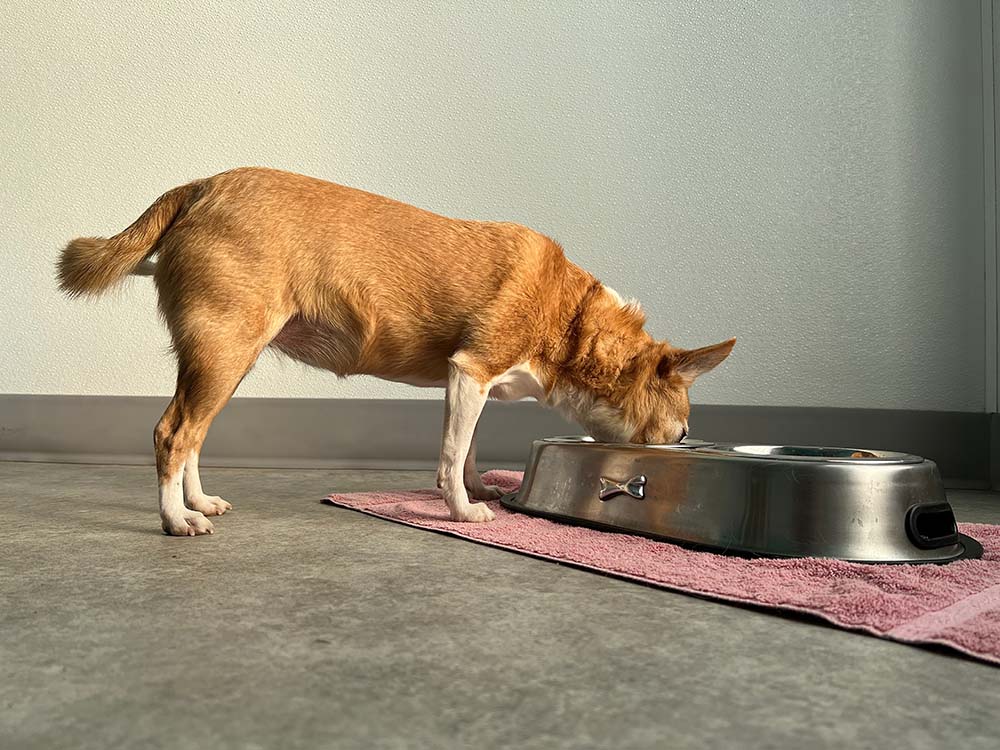Can Dogs Eat Chocolate Ice Cream? Vet Approved Facts & FAQ
Updated on

Click to Skip Ahead
Chocolate, in and of itself, is one of the most popular and widely enjoyed treats on the planet. However, when in ice cream form, it transforms into one of the best summer treats. If you’ve ever dropped some melted ice cream on the floor and your dog has happily swooped in to lick it up, you’ll know that canines enjoy sweet treats, too. However, chocolate ice cream is not safe for dogs, and you shouldn’t share your scoops with them.
You don’t need to worry too much if those drops of ice cream that dripped on the floor were chocolate-flavored, as small amounts generally aren’t dangerous, depending on your dog’s size. However, if your dog ate a large amount of chocolate ice cream relative to their size, you’ll need to call your vet immediately because that amount of chocolate can cause severe issues in your dog.
What Are the Dangers Around Ice Cream?
Although a dog can get away with a few licks of vanilla ice cream and a few other flavors, they shouldn’t be offered any amount of chocolate ice cream. There are several reasons for this:

Sugar
Sugar isn’t toxic to dogs, but it can be harmful if it is consumed frequently and in large quantities. Ice cream is loaded with sugar and isn’t a good treat option for your dog. In fact, it should be avoided entirely because it can upset your dog’s stomach and cause excessive weight gain over time.
Fat
Ice cream is high in fat. If your dog eats too much fat, it can lead to obesity and even cause pancreatitis, which might present itself in a mild or severe form. Either way, your dog may experience nausea, fever, vomiting, pain, fatigue, diarrhea, and a lack of appetite.

Lactose Intolerance
Lactose intolerance in dogs is more common than most people realize. Some dogs struggle to digest any form of cow’s milk, even in small quantities. Depending on whether your dog is lactose intolerant and how much ice cream they ingest, they might be able to eat ice cream without showing any symptoms, or they may experience diarrhea, gas, vomiting, and abdominal pain.
Toxic Ingredients
Although sugar, fat, and cow’s milk can have adverse effects on your dog, they’re not the main concern around chocolate ice cream. Eating too much ice cream may cause gastrointestinal upset, but eating chocolate ice cream can be life-threatening because it contains ingredients that are toxic to dogs.
Chocolate
Chocolate is toxic to dogs because it contains theobromine and caffeine. Dark chocolate contains more theobromine than lighter chocolate, which makes it more dangerous to dogs.
If a canine consumes a small amount of chocolate ice cream, it may cause mild symptoms that will be unpleasant but not life-threatening.
However, the larger the quantity of chocolate ice cream, the more dangerous it is for a dog because they’ll be consuming a higher quantity of theobromine. The size of the dog should also be taken into consideration because the same amount of chocolate ice cream would result in more severe symptoms in a smaller dog than a larger one.
Milder signs of chocolate poisoning are vomiting, diarrhea, extreme thirst, restlessness, panting, and an increased heart rate. More severe signs are tremors, seizures, and heart failure.
If your pooch consumes a large amount of chocolate, they need to be seen by your veterinarian immediately. Signs may not arise immediately, but the sooner the veterinarian can start treatment on your dog, the greater their chance at a full recovery.

Xylitol
Some ice creams use xylitol, which is a sugar substitute that has several benefits for humans. However, if a dog consumes a product with xylitol, it can cause their blood sugar levels to drop rapidly leading to seizures. Xylitol also causes liver damage.
If your dog had an ice cream with xylitol, you need to call your veterinarian immediately. Signs of xylitol poisoning are vomiting, weakness, difficulty standing, tremors, seizures, and coma.
Other Ingredients
Macadamia nuts and raisins are two other ingredients that may be included in chocolate ice-cream which are harmful for dogs. While your dog would need to eat a lot of macadamia nuts to become unwell, if your dog ingests any amount of raisins they are at risk for kidney injury and you should contact your veterinarian immediately.

What Does Chocolate Poisoning Treatment Include?
The severity of the chocolate poisoning will depend on the type of chocolate ice cream your dog ate and how much of it they consumed. Milk chocolate ice cream contains less theobromine than dark chocolate ice cream, and one lick of chocolate ice cream is less concerning than one scoop of chocolate ice cream. Therefore, the treatment your dog receives and the extent of it will depend on those two factors, as well as your dog’s size. If you’re not sure whether to be worried or not, call your veterinarian or animal poison control.
If the amount of chocolate is concerning for your dog or there are other toxic ingredients in the ice cream your vet may choose to induce vomiting immediately. If there is a delay in getting your dog to vomit, the risk goes up. However, treatment will typically still be effective within a few hours.
Your dog will likely be given activated charcoal to reduce the presence of theobromine in the body, and intravenous fluid therapy may be administered to stabilize your dog. Symptomatic treatment is given based on the signs your dog is showing.
Dog-Friendly Alternatives
Although chocolate ice cream is a big no-no for dogs, it doesn’t mean they have to miss out on all the summer fun. There are dog-friendly ice creams and lollies that you can get from your local pet store, as well as recipes online that only contain dog-friendly ingredients.
If you want to keep things simple and use single ingredients around your kitchen, you can offer your dog easy alternatives that are just as icy and enjoyable. A few dog-friendly alternatives are:
- Blended frozen bananas
- Apple slices
- Blackberries
- Blueberries
- Watermelon
- Strawberries
If your dog is overweight but loves summer treats, you can give them plain ice blocks to enjoy. Many dogs love licking blocks of frozen water as it cools them down, and it is a good way to keep your pooch hydrated!
Conclusion
Dogs should not eat chocolate ice cream because it contains theobromine, which is toxic to dogs in large quantities. Ice cream is also full of fat and sugar, which are not healthy for your dog, causing obesity and pancreatitis in some cases. Even worse, if the ice cream contains xylitol or raisins, even a small amount could be toxic for your dog.
There are healthier alternatives to chocolate ice cream that you can offer your dog, such as blended frozen bananas, dog-friendly ice cream and lollies, and ice cubes.
See also:
- My Dog Ate Nutella: Our Vet Explains What to Do
- Can Dogs Eat Ice Cream Cones? Vet-Reviewed Risks & Alternatives
Featured Image Credit: JumpStory













